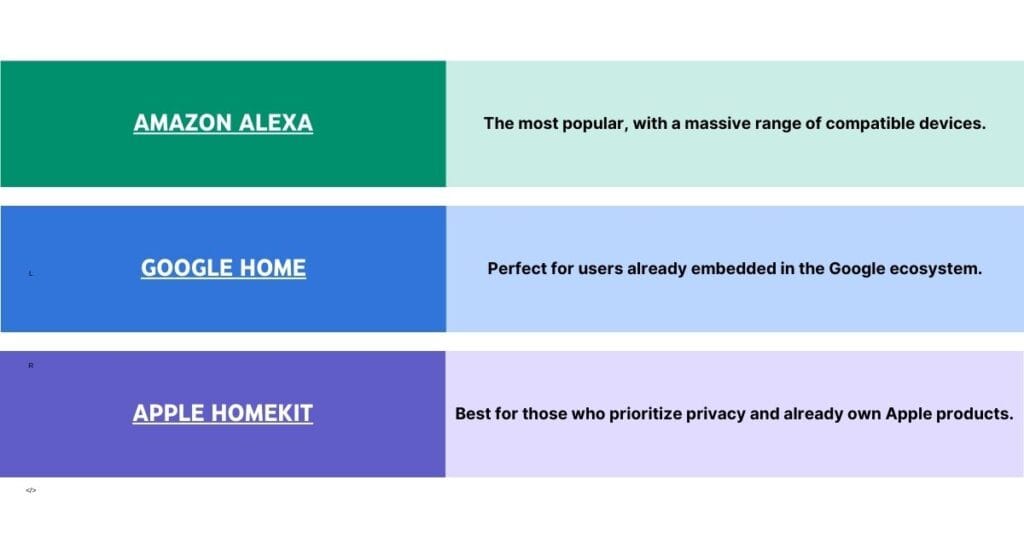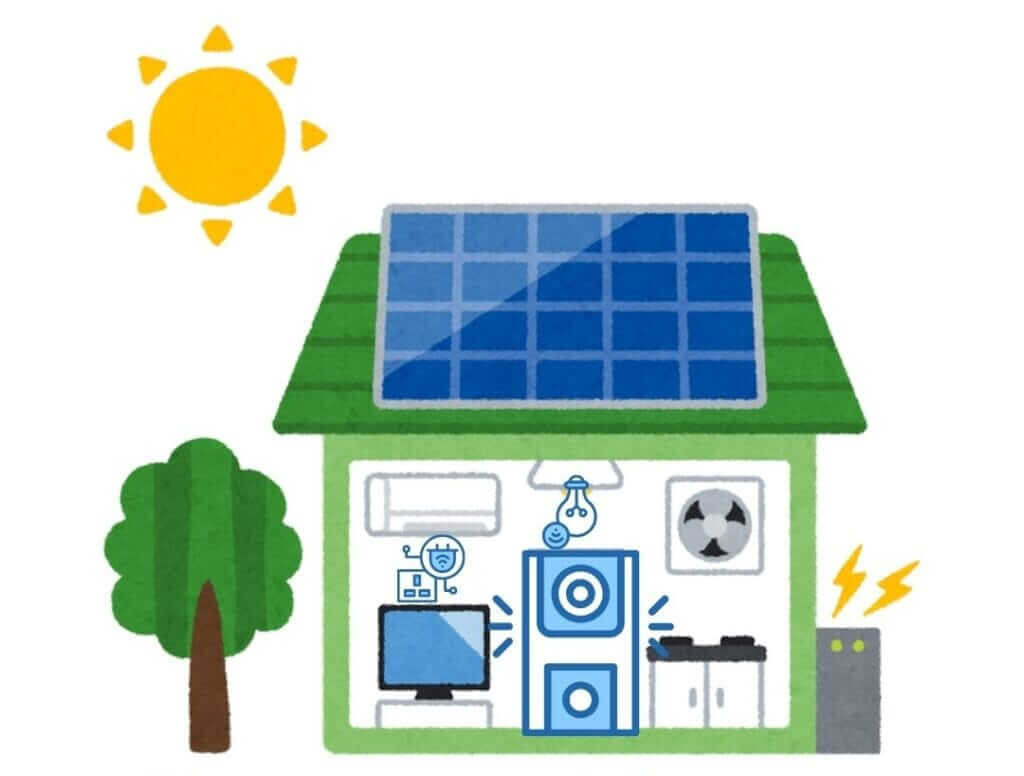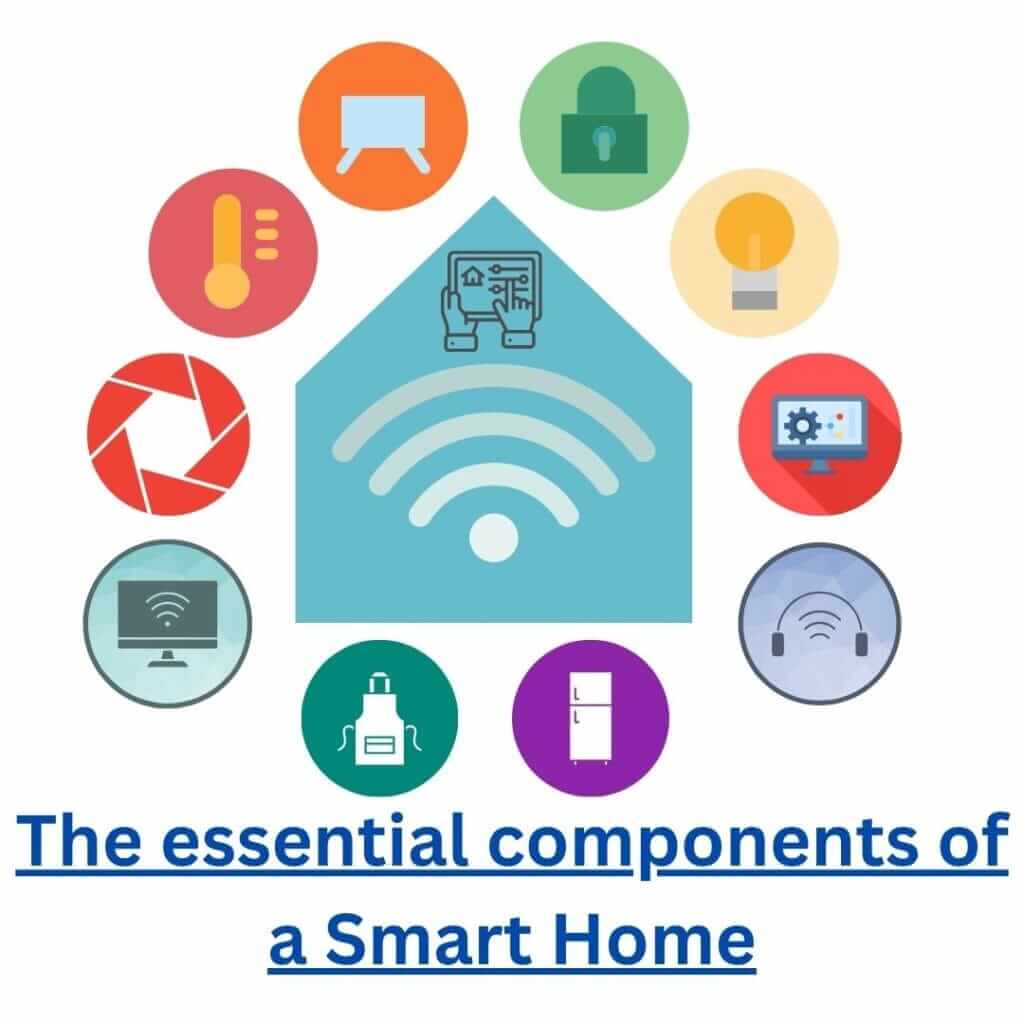Want to transform your home with the best smart home devices in 2024? This guide breaks down everything you need to know—whether you’re interested in home security, smart lighting, or energy-saving thermostats. We cover everything from AI-powered assistants like Alexa and Google Home to smart appliances and security systems. If you’re just starting or looking to upgrade, we’ve got tips, comparisons, and must-know insights.
Welcome to the future! Smart homes in 2024 are transforming our lives, making life more convenient, secure, and energy-efficient. According to recent studies, the average smart home will have 50 connected devices by 2024—up from just a few a decade ago. This guide will explore the latest smart home Technology, from voice-activated assistants like Alexa and Google Home to smart thermostats that slash your energy bills. Whether building a smart home from scratch or upgrading, this guide will help you navigate the sea of options. Let’s dive in!
Key Takeaway:
– Smart home devices offer convenience, energy savings, and enhanced security.
– They can improve accessibility for people with disabilities.
– Smart devices optimize daily routines and increase home efficiency.
– They provide peace of mind through remote monitoring and control.
– The technology continues to evolve, offering more benefits over time.
The Evolution of Smart Homes

Smart homes have evolved rapidly over the last decade. What once seemed like a luxury is now a standard feature in modern homes. The journey began with programmable thermostats and basic security systems, but AI Technology has taken things to the next level. Now, homes can anticipate your needs, adjust temperatures, control lights, and secure your property—all on autopilot.
As we move into 2024, smart homes focus more on interoperability, privacy, and energy Efficiency. Expect even greater integration across devices and platforms like Matter, a new protocol designed to unify smart home ecosystems.
Building Your Smart Home Ecosystem
Embarking on your smart home journey can feel like stepping into a sci-fi movie, but don’t worry – we’ve got you covered! Let’s break down the Process into manageable steps that’ll make you feel like a tech wizard in no time.
Assessing Your Needs
Before jumping into smart home tech, consider what you need. Do you want to focus on security, energy savings, or convenience? Starting with one or two areas ensures you don’t feel overwhelmed. Whatever your goals are, write them down. This will be your smart home roadmap.
Pro Tip: Create a plan that prioritizes the features that most impact your daily life. Whether it’s setting up a voice assistant or installing smart lights, start small and build gradually.

Choosing the Right Platform
Your smart home will need a central hub—the brain that controls everything. In 2024, the top platforms are Amazon Alexa, Google Home, and Apple HomeKit:
Comparing-Smart-Hubs:

Your choice will dictate the compatibility of future devices, so make sure to pick the right ecosystem for your lifestyle.
Understanding Smart Home Protocols
Smart home devices communicate via protocols, and understanding them is critical to building an efficient home setup:
- Wi-Fi: WPA2 and WPA Encryption, ideal for high-bandwidth devices (e.g., cameras, music, printers..), but drains the battery faster.
- Zigbee/Z-Wave: AES-128 Encryption, Low-power, great for sensors and switches.
- Matter: AES-128 Encryption, the new standard in 2024, makes device compatibility easier across platforms.
Choose devices that fit within your ecosystem for a seamless experience.
Budgeting for Your Smart Home
Let’s face it—building a smart home can be pricey, but it doesn’t have to break the bank. Here’s a rough guide for your budget:

Smart Home Hubs and AI Assistants
AI assistants are the backbone of any smart home. Whether you’re an Alexa user or prefer Google Home or Apple HomeKit, your assistant will help control all your devices through voice commands, routines, and even predictive actions.
Comparing Smart Hubs (Pros & Cons):
Amazon Echo Dot
- Powered by Alexa: Seamlessly integrates with Amazon services for voice-controlled assistance.
- Smart Home Integration: Connects with a wide range of smart home devices for easy control.
- Shopping Convenience: Enables hands-free shopping and order tracking through Amazon.
- Affordable Sound Quality: Delivers impressive audio performance at a budget-friendly price.
- Extensive Skills Library: Supports a variety of tasks, from playing music to managing schedules.
- Voice Recognition Limitation: May struggle with complex queries, lagging behind Google Assistant.
Google Nest Mini
- Seamless Google Integration: Excel connects with Google’s ecosystem for search queries, calendar management, and personalized assistance.
- Highly Accurate Voice Recognition: Handles detailed and complex queries with precision.
- Optimized for Personalization: Delivers tailored results based on user preferences and habits.
- Compact Sound Quality: Delivers solid audio performance for small spaces.
- Limited Bass Depth: Lacks the deep bass found in larger smart speakers.
Apple Siri
- Exclusive Apple Integration: Seamlessly works with Apple devices like the HomePod and iPhone.
- Optimized for Apple Apps: Provides smooth interaction with iMessage, Apple Music, and HomeKit.
- Ecosystem Synergy: Enhances the overall Apple experience with tight integration across devices.
- Limited Third-Party Support: Trails behind Alexa and Google Assistant in integrating with third-party apps.
- Complex Query Challenges: Struggles with handling more intricate or detailed queries than competitors.
In 2024, AI assistants are becoming more predictive, learning your routines to automate tasks before you ask. For example, your thermostat might start adjusting based on your daily habits, saving you energy.
Intelligent Lighting Systems
Smart lighting doesn’t just brighten up your home—it can also boost your well-being and save energy.
Types of Smart Lighting:
- Smart Bulbs: Control color, brightness, and scheduling via voice or app.
- Smart Strips: Add ambiance to kitchens, living rooms, or even behind TVs.
- Smart Switches: Replace traditional switches for easy remote control of existing lights.
For more info, check out these articles: The Ultimate Guide to Smart Lighting: Brands, Features, and Installation and Top 10 Smart House Lighting Control Systems for 2024
In 2024, expect circadian rhythm lighting, which adjusts color temperatures based on the time of day to improve sleep and mood. Philips Hue and Lutron Caseta are top picks for customizable lighting options.

Home Security and Safety Devices
Your home is your sanctuary, and smart security systems ensure it stays that way. Here’s what you need to know:
- Smart Cameras: Monitor your home with high-definition video, motion detection, and two-way audio. Top picks include Ring and Google Nest Cameras.
- Smart Locks: Control who enters your home via your smartphone. Options like the August Smart Lock make it easy to lock/unlock your door remotely.
- AI Threat Detection: Modern systems like SimpliSafe use AI to differentiate between real threats and false alarms.
For reference: Best Smart Lock of 2024: Top Picks for Security and Convenience and Smart Doorbells and Cameras: Enhancing Your Home’s Security and Securing Your Smart Home: Ultimate Cybersecurity Tips for IoT Devices in 2024.
These systems integrate seamlessly with Alexa or Google Home for effortless voice control and real-time notifications.
Smart Kitchen and Home Appliances

The kitchen is evolving, too! Especially when you come back from work tired! Smart appliances make cooking more accessible and more efficient.
Top Smart Kitchen Devices:
- Smart Fridges: Like the Samsung Family Hub, no need to check the inventory, they monitor it for you! It also suggests recipes and alerts you to expired items.
- Smart Ovens: AI-powered ovens such as the Anova Precision Oven help you cook like a pro with remote controls and preset cooking modes.
Climate Control and Energy Management

Smart thermostats like Nest or Ecobee learn your habits to adjust temperatures automatically, saving energy and reducing bills. Smart blinds can also control sunlight to regulate indoor temperatures.
For those with solar panels, smart homes in 2024 can prioritize using solar energy, reducing reliance on the grid and maximizing energy savings.
Health, Wellness, and Fitness Devices
Smart homes are stepping into wellness. Devices like sleep trackers and smart scales can track health metrics and suggest improvements. The Peloton Bike offers interactive classes to keep you fit, while smart air purifiers ensure you breathe clean air. We will talk more about this topic in a later post.
The Benefits of Having a Smart Home
Having a smart home isn’t just about convenience—it’s about improving your quality of life. Whether it’s energy savings, enhanced security, or increased comfort, a smart home adapts to your needs. Imagine waking up to the perfect temperature, receiving real-time security alerts, and saving on energy bills. Imagine finding your grilled bread ready and your preferred coffee waiting for you! It’s a lifestyle upgrade you’ll wish you had sooner.
Conclusion: The essential components of a smart home

- Smart Home Hubs: The central device that connects and controls your smart home devices, such as Amazon Echo, Google Nest Hub, or Siri.
- Smart Lighting: Includes smart bulbs, smart switches, and smart lighting strips, all controlled through an app or voice assistant.
- Smart Security Systems: Systems that integrate smart cameras, motion sensors, and alarms to ensure home security.
- Smart Thermostats: These regulate temperature based on your habits to save energy, like the Nest Thermostat or Ecobee.
- Smart Sensors: Devices that detect motion, temperature, and humidity, often used in home security or climate control.
- Smart Cameras: Provide real-time video monitoring for security, such as the Ring or Google Nest cameras.
- Smart Door Locks: Allows you to lock and unlock your doors remotely with your smartphone, such as the August Smart Lock.
- Smart Appliances include smart fridges, ovens, and washers that automate tasks and improve Efficiency.
- Entertainment Systems: Smart Blinds and Curtains that adjust based on the time of day or temperature; Smart TVs, speakers, and streaming devices offer a connected and customizable home entertainment experience.
- Networking and Connectivity: Ensures that all your smart devices can communicate, often requiring strong Wi-Fi or mesh networks.
- Smart Speakers and Voice Assistants: Devices like Amazon Echo, Google Home, and Apple HomePod serve as the control center for voice commands.
- Smart Plugs and Outlets: Allow remote control of connected devices, adding “smart” functionality to traditional appliances
With smart homes becoming more intuitive and accessible, there’s never been a better time to upgrade. Start with a few essential devices, and let your home evolve as you get more comfortable with the Technology. The beauty of smart homes is that they grow with you, offering solutions that make life easier, safer, and more enjoyable.
FAQ
What is a smart home?
A Smart Home uses devices connected to the internet that can be controlled remotely via a smartphone, voice assistant, or automation system.
What are the benefits of a smart home?
Smart Home Devices offer convenience, energy savings, enhanced security, and improved quality of life through automation and remote control.
Which smart home platform is the best?
The best platform depends on your needs: Amazon Alexa is best for device compatibility, Google Home excels in natural language processing, and Apple HomeKit prioritizes security and privacy.
Can I build a smart home on a budget?
Yes! Start small with affordable Smart Home Devices like smart plugs, bulbs, and a primary hub, then gradually expand as needed.
Are smart homes secure?
Smart homes can be secure if you follow best practices like using strong passwords, enabling two-factor authentication, and updating device firmware regularly.
What’s the most accessible smart device to start with?
Smart bulbs or smart plugs are great starting points. They’re easy to install and allow immediate control via apps or voice commands.
Can smart home devices save energy?
Smart thermostats, plugs, and lights can reduce energy consumption by automating settings based on your habits.
How do I control smart devices?
You can control smart devices using apps on your smartphone, voice commands through assistants like Alexa or Google, or by setting up automation routines.


